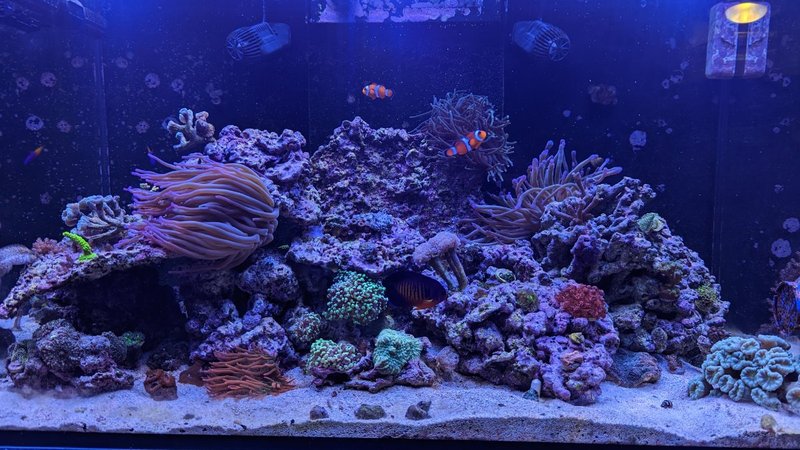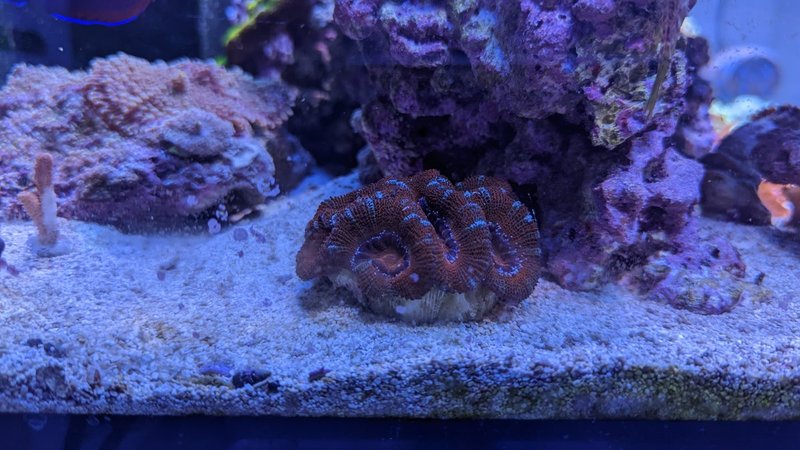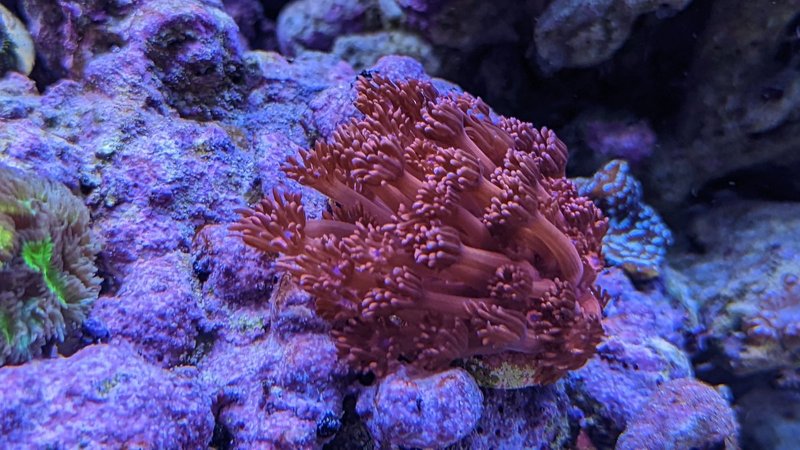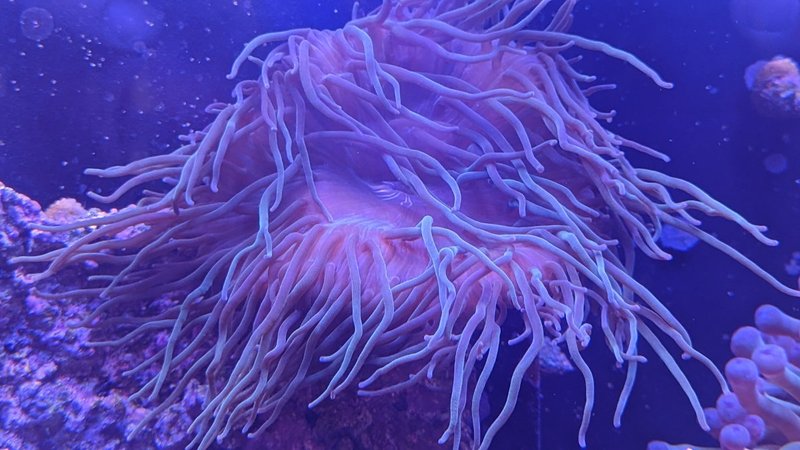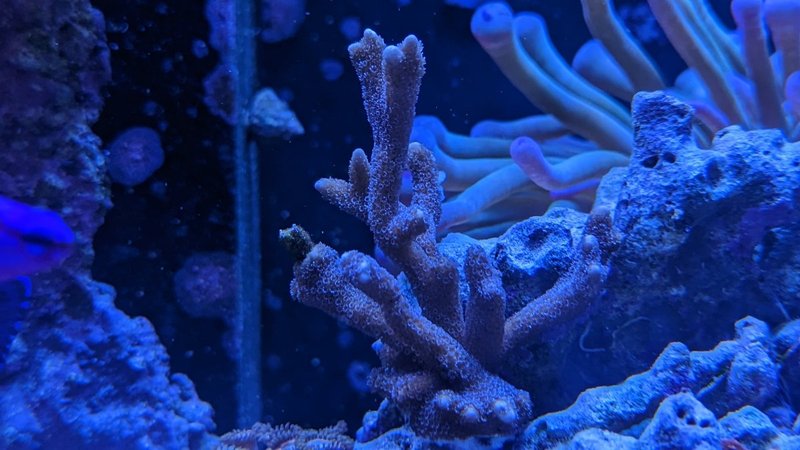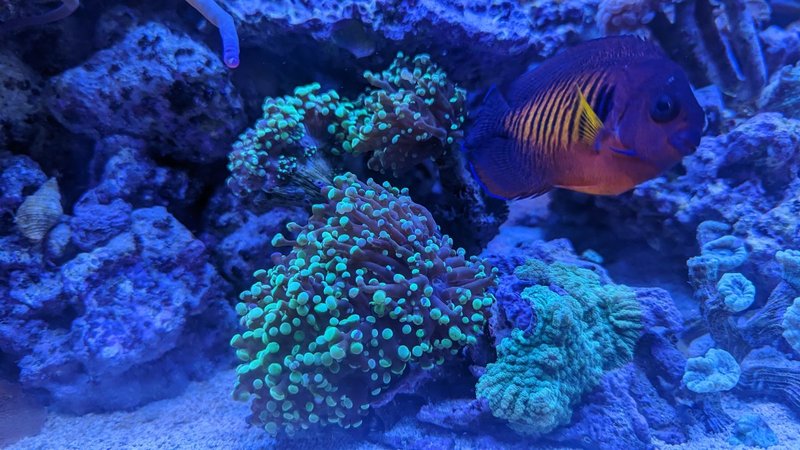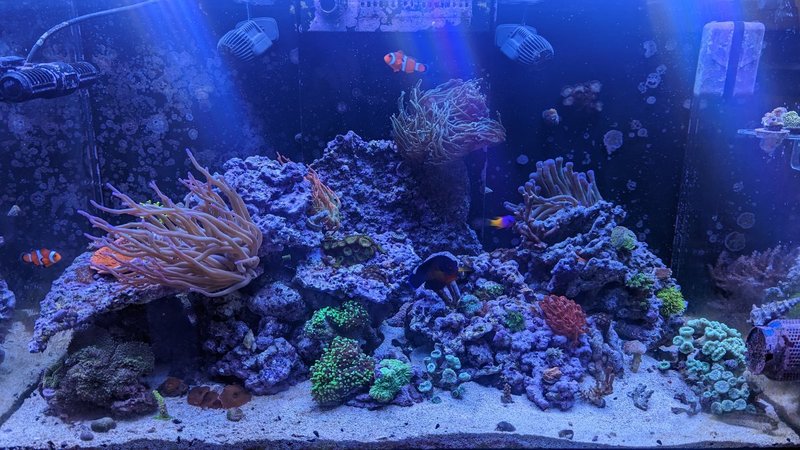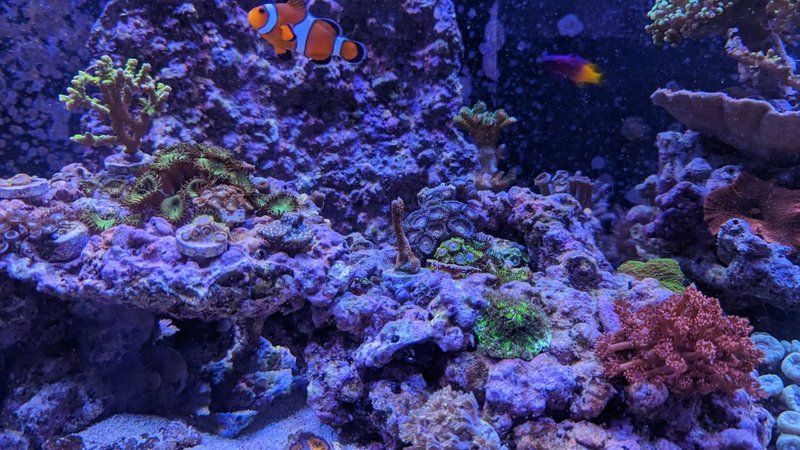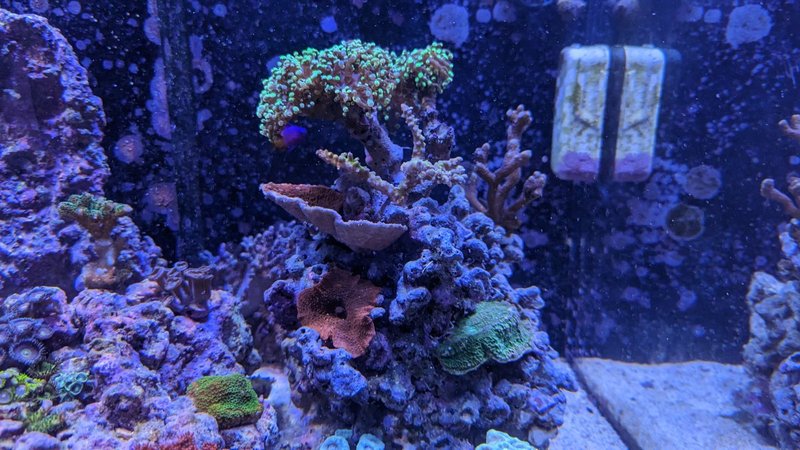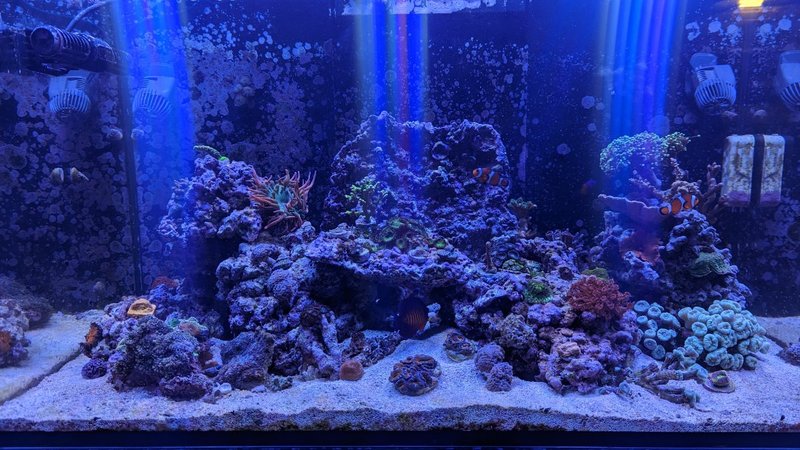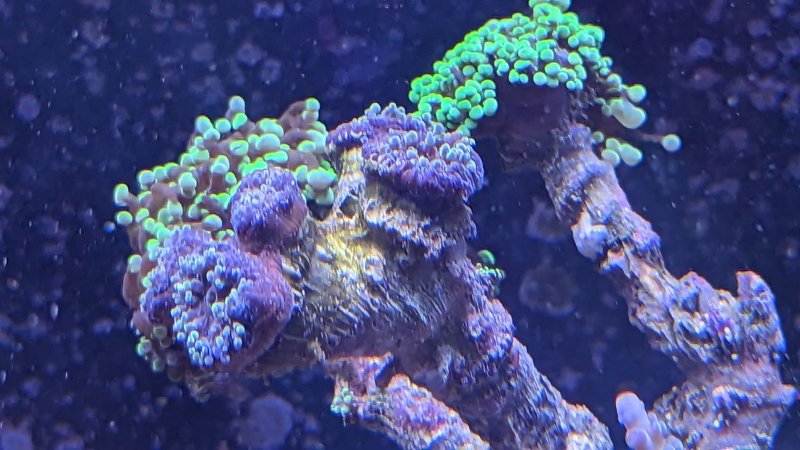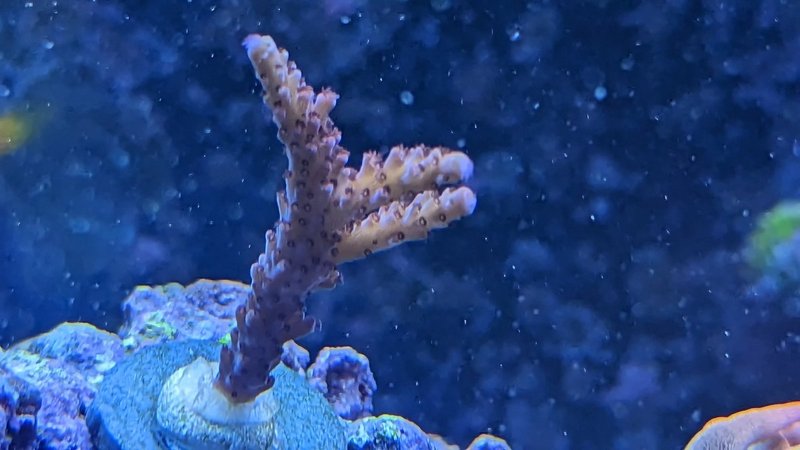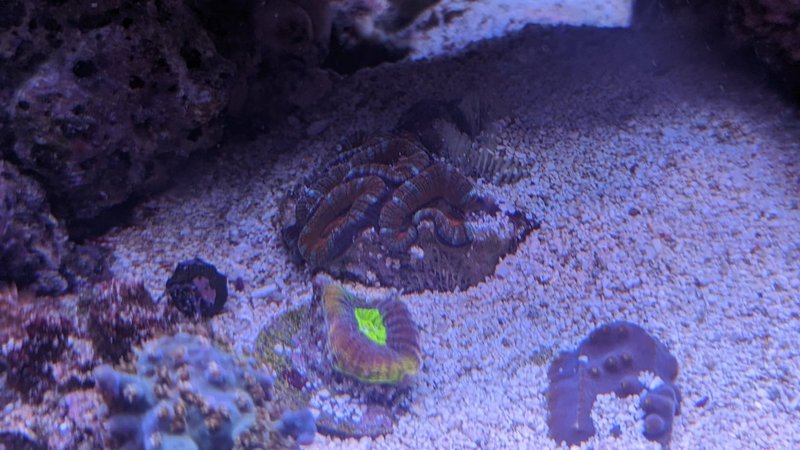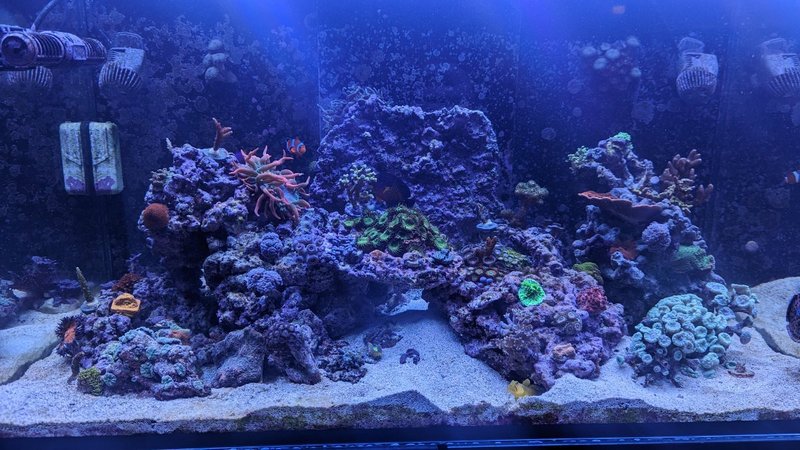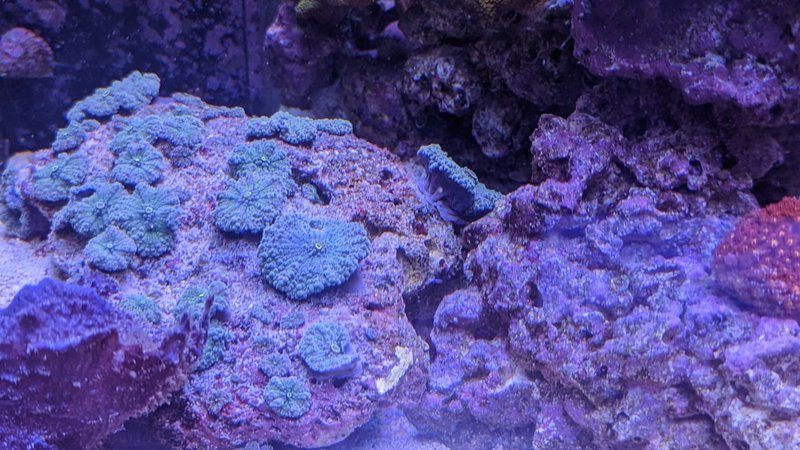Hello Everyone!
This project started around December '21. I had been documenting my progress, setbacks, and lessons learned with my local club but I thought it might be interesting to a broader audience so I am making a copy of my local thread here.
This will be a very long post, I have a lot of information that I've compiled over the last year or so. The too long, didn't read - TL/DR is a friend gifted me a Reefer 250 with a ton of issues and I had to learn reef keeping on the fly. Tank is doing well now after many, many setbacks.
Start of Actual Build Thread -
Hello Everyone, I wanted to take a moment to share a story, and say thank you to all of the great posts and fantastic information I've found here.
I was recently gifted a reef tank from a friend. He was going through a hard time and had to leave his house suddenly. He called me and asked if I was interested in his "fish tank" because he wanted it to go to someone responsible and most of his friends weren't up to the task of caring for it. I initially declined, I already have a large turtle tank and wasn't in the market for a new tank. He told me that there were animals in the tank and that he didn't really have anyone else to turn to, so I agreed to take the tank. He informed me that it would have to be picked up in the next couple of hours, and absolutely had to be out of the house that night.
After a few more questions I discovered that it was a Red Sea Reefer 250, complete with fish, inverts and corals.
When I arrived at his place I saw that the tank was in bad shape. It had been neglected for quite some time, it was overgrown with algae, I couldn't find any of the creatures living it and I have no idea what he had the parameters at. I've kept fish for a long time, and I have had a saltwater tank in the past, but got out of the hobby. I knew this was going be hard on the fish, challenging to move, and would likely kill most of the inhabitants. I didn't have any chemicals on hand, no salt at home, nothing to treat the fish with, no food, and no quarantine area for them.
Here's a shot of the tank when I arrived:

I did a little research on moving a tank and followed the advice the best I could. I called my wife and had her clear a spot for the new tank, went to Home Depot and grabbed a ton of buckets, siphoning hose, and some cleaning supplied. I drained the tank and preserved the water in buckets, kept the corals wet, and eventually found the fish. I kept them separated by species. We broke everything down and managed to Jenga it into my truck.
When I got home I cleaned everything as quickly as I could. I felt like I was under a time crunch to get everything set back up because I didn't want any of the creatures to be in stagnant water for long. I worked on taking inventory and setting everything back up. In total I had:
Equipment:
1 Red Sea Reefer 250 Tank
1 Octo 150S Classic Skimmer
1 Ecotech Quiet Drive Vortech Power head
1 Reactor with activated charcoal
2 Ecotech Radion XR15 Pro Gen 3 lights
1 Heater
1 Temperature alarm
1 Power Brick
1 Ecotech Reeflink
1 Return pump
Various accessories (nets, magfloat, agale scrapper, etc.)
Livestock: 2 4 strip damsels 1 Yellow tail damsel 1 Coral beauty angel fish 1 Skunk shrimp 1 Chocolate chip sea star 1 Tuxedo urchin 1 RBT anemone 1 Large Kenya tree coral and several small ones 3 Clusters of zoas (no idea what kind) 5 Hermit crabs 1 Turbo snail 1 Sleeper goby 1 Sailfin blenny Some pulsing Xenia chunks.
I ran to Petco and grabbed some instant ocean salt and hit the grocery store for distilled water. I managed to get the tank up and running pretty quickly and returned all of the creatures back to their home. All in, the only fish I lost was the yellow tail damsel.
I hired a local reef maintenance company to come over and show me how to care for the tank, and service it. We went over all of the details and my confidence level went up quite a bit. It wasn't as hard as I thought it was going to be.
The tank was way over crowded with live rock. My friend told me that he thought most of it was coral of one type or another, so I wanted to get it all back in the tank and see what started to show signs of life. After a few weeks there were quite a few pieces that didn't seem to have anything growing on them and I removed about a 5 gallon bucket worth of rock. I took it to my LFS, he added it to a quarantine tank, and he'll rehome it eventually. Maybe he'll get lucky and get some free frags out of it, but I doubt it.
The lights needed service, so they got sent off for repair. I have no idea how long the tank was without light. It was near a sliding glass door in my friends basement, so I guess they were getting sunlight through the glass. They're up and running now and are programmed to the Coral Lab AB+ routine.
Thanks to the great posts here I decided to rescape the tank. I still have more rock in there than I would like, but the stuff that I kept all has something living in or on it. I'm waiting to see what sprouts. Once I know what is legitimately thriving I can remove a few more things.
If anyone is interested in seeing pictures, there is a little album here:




I'm sure a few of you probably noticed the selection of things living in this tank are not ideal. Please remember, I didn't pick them. I'm working on getting everyone in the best situation I can provide for them, and I'm trying to keep them all safe. I hand feed the starfish to keep him away from the corals, the aquascaping has given the blenny and the goby some great hiding spots so they can stay away from the damsels. The damsels have caves that they like to stay in, the shrimp is hosting the anemone (I hand feed the anemone too and the shrimp gets scraps). The urchin picked up a zoa cluster and he's been wearing it as a hat while he walks around the tank.
The Kenya tree is under control for now, and I have a place that will take frags. So far, so good, and thanks to your experience I know what to look for so I can keep ahead of any issues that might pop up.
I had the tank going for about 6 months with no issues and decided to go to a frag festival in southern Virginia and picked up some new stuff. For a few months everything was thriving. About two months ago I checked on the tank when I got home from work and noticed that the starfish was dead, most of my corals were bleached, and my soft corals looked terrible.
I immediately drained 50 percent of the water and changed it with Imagitarum sea water. I tested my parameters and ammonia was a little high (presumably due to dead animals), but I couldn't identify what was killing the tank.
I went to scrub out the sump and got pretty badly electrocuted. Due to the poor condition of some of the hardware a cable had corroded and was running voltage into the water.
I pulled the pump, replaced it, checked the remaining equipment and got the tank back in order. The corals that survived are doing well. Parameters are in order and the tank is back on track.
What a learning experience it has been. Unfortunately I lost a ton of coral, but lesson learned. Thanks to everyone here I was able to triage and save some of the tank.
This project started around December '21. I had been documenting my progress, setbacks, and lessons learned with my local club but I thought it might be interesting to a broader audience so I am making a copy of my local thread here.
This will be a very long post, I have a lot of information that I've compiled over the last year or so. The too long, didn't read - TL/DR is a friend gifted me a Reefer 250 with a ton of issues and I had to learn reef keeping on the fly. Tank is doing well now after many, many setbacks.
Start of Actual Build Thread -
Hello Everyone, I wanted to take a moment to share a story, and say thank you to all of the great posts and fantastic information I've found here.
I was recently gifted a reef tank from a friend. He was going through a hard time and had to leave his house suddenly. He called me and asked if I was interested in his "fish tank" because he wanted it to go to someone responsible and most of his friends weren't up to the task of caring for it. I initially declined, I already have a large turtle tank and wasn't in the market for a new tank. He told me that there were animals in the tank and that he didn't really have anyone else to turn to, so I agreed to take the tank. He informed me that it would have to be picked up in the next couple of hours, and absolutely had to be out of the house that night.
After a few more questions I discovered that it was a Red Sea Reefer 250, complete with fish, inverts and corals.
When I arrived at his place I saw that the tank was in bad shape. It had been neglected for quite some time, it was overgrown with algae, I couldn't find any of the creatures living it and I have no idea what he had the parameters at. I've kept fish for a long time, and I have had a saltwater tank in the past, but got out of the hobby. I knew this was going be hard on the fish, challenging to move, and would likely kill most of the inhabitants. I didn't have any chemicals on hand, no salt at home, nothing to treat the fish with, no food, and no quarantine area for them.
Here's a shot of the tank when I arrived:
I did a little research on moving a tank and followed the advice the best I could. I called my wife and had her clear a spot for the new tank, went to Home Depot and grabbed a ton of buckets, siphoning hose, and some cleaning supplied. I drained the tank and preserved the water in buckets, kept the corals wet, and eventually found the fish. I kept them separated by species. We broke everything down and managed to Jenga it into my truck.
When I got home I cleaned everything as quickly as I could. I felt like I was under a time crunch to get everything set back up because I didn't want any of the creatures to be in stagnant water for long. I worked on taking inventory and setting everything back up. In total I had:
Equipment:
1 Red Sea Reefer 250 Tank
1 Octo 150S Classic Skimmer
1 Ecotech Quiet Drive Vortech Power head
1 Reactor with activated charcoal
2 Ecotech Radion XR15 Pro Gen 3 lights
1 Heater
1 Temperature alarm
1 Power Brick
1 Ecotech Reeflink
1 Return pump
Various accessories (nets, magfloat, agale scrapper, etc.)
Livestock: 2 4 strip damsels 1 Yellow tail damsel 1 Coral beauty angel fish 1 Skunk shrimp 1 Chocolate chip sea star 1 Tuxedo urchin 1 RBT anemone 1 Large Kenya tree coral and several small ones 3 Clusters of zoas (no idea what kind) 5 Hermit crabs 1 Turbo snail 1 Sleeper goby 1 Sailfin blenny Some pulsing Xenia chunks.
I ran to Petco and grabbed some instant ocean salt and hit the grocery store for distilled water. I managed to get the tank up and running pretty quickly and returned all of the creatures back to their home. All in, the only fish I lost was the yellow tail damsel.
I hired a local reef maintenance company to come over and show me how to care for the tank, and service it. We went over all of the details and my confidence level went up quite a bit. It wasn't as hard as I thought it was going to be.
The tank was way over crowded with live rock. My friend told me that he thought most of it was coral of one type or another, so I wanted to get it all back in the tank and see what started to show signs of life. After a few weeks there were quite a few pieces that didn't seem to have anything growing on them and I removed about a 5 gallon bucket worth of rock. I took it to my LFS, he added it to a quarantine tank, and he'll rehome it eventually. Maybe he'll get lucky and get some free frags out of it, but I doubt it.
The lights needed service, so they got sent off for repair. I have no idea how long the tank was without light. It was near a sliding glass door in my friends basement, so I guess they were getting sunlight through the glass. They're up and running now and are programmed to the Coral Lab AB+ routine.
Thanks to the great posts here I decided to rescape the tank. I still have more rock in there than I would like, but the stuff that I kept all has something living in or on it. I'm waiting to see what sprouts. Once I know what is legitimately thriving I can remove a few more things.
If anyone is interested in seeing pictures, there is a little album here:
I'm sure a few of you probably noticed the selection of things living in this tank are not ideal. Please remember, I didn't pick them. I'm working on getting everyone in the best situation I can provide for them, and I'm trying to keep them all safe. I hand feed the starfish to keep him away from the corals, the aquascaping has given the blenny and the goby some great hiding spots so they can stay away from the damsels. The damsels have caves that they like to stay in, the shrimp is hosting the anemone (I hand feed the anemone too and the shrimp gets scraps). The urchin picked up a zoa cluster and he's been wearing it as a hat while he walks around the tank.
The Kenya tree is under control for now, and I have a place that will take frags. So far, so good, and thanks to your experience I know what to look for so I can keep ahead of any issues that might pop up.
I had the tank going for about 6 months with no issues and decided to go to a frag festival in southern Virginia and picked up some new stuff. For a few months everything was thriving. About two months ago I checked on the tank when I got home from work and noticed that the starfish was dead, most of my corals were bleached, and my soft corals looked terrible.
I immediately drained 50 percent of the water and changed it with Imagitarum sea water. I tested my parameters and ammonia was a little high (presumably due to dead animals), but I couldn't identify what was killing the tank.
I went to scrub out the sump and got pretty badly electrocuted. Due to the poor condition of some of the hardware a cable had corroded and was running voltage into the water.
I pulled the pump, replaced it, checked the remaining equipment and got the tank back in order. The corals that survived are doing well. Parameters are in order and the tank is back on track.
What a learning experience it has been. Unfortunately I lost a ton of coral, but lesson learned. Thanks to everyone here I was able to triage and save some of the tank.



